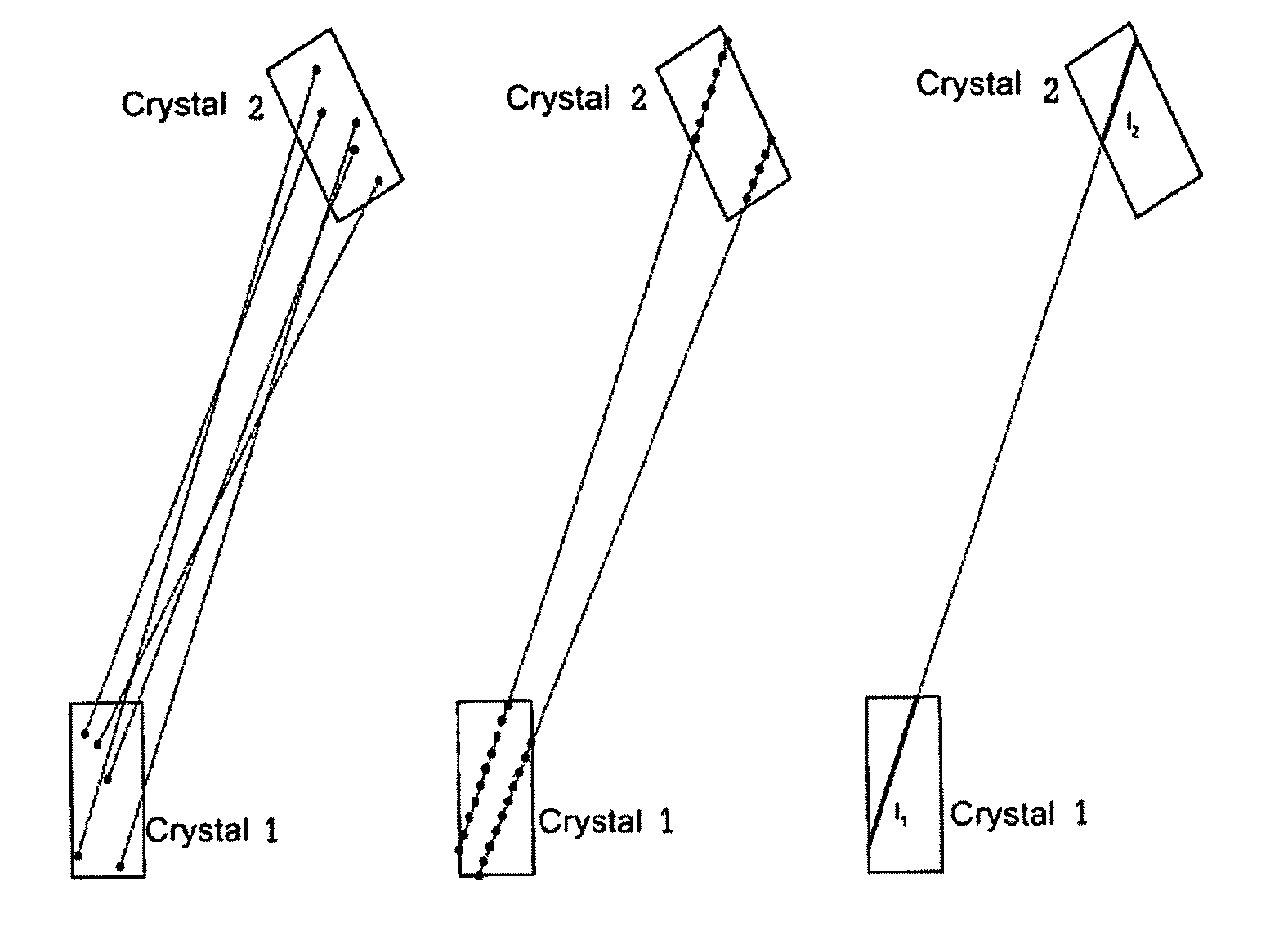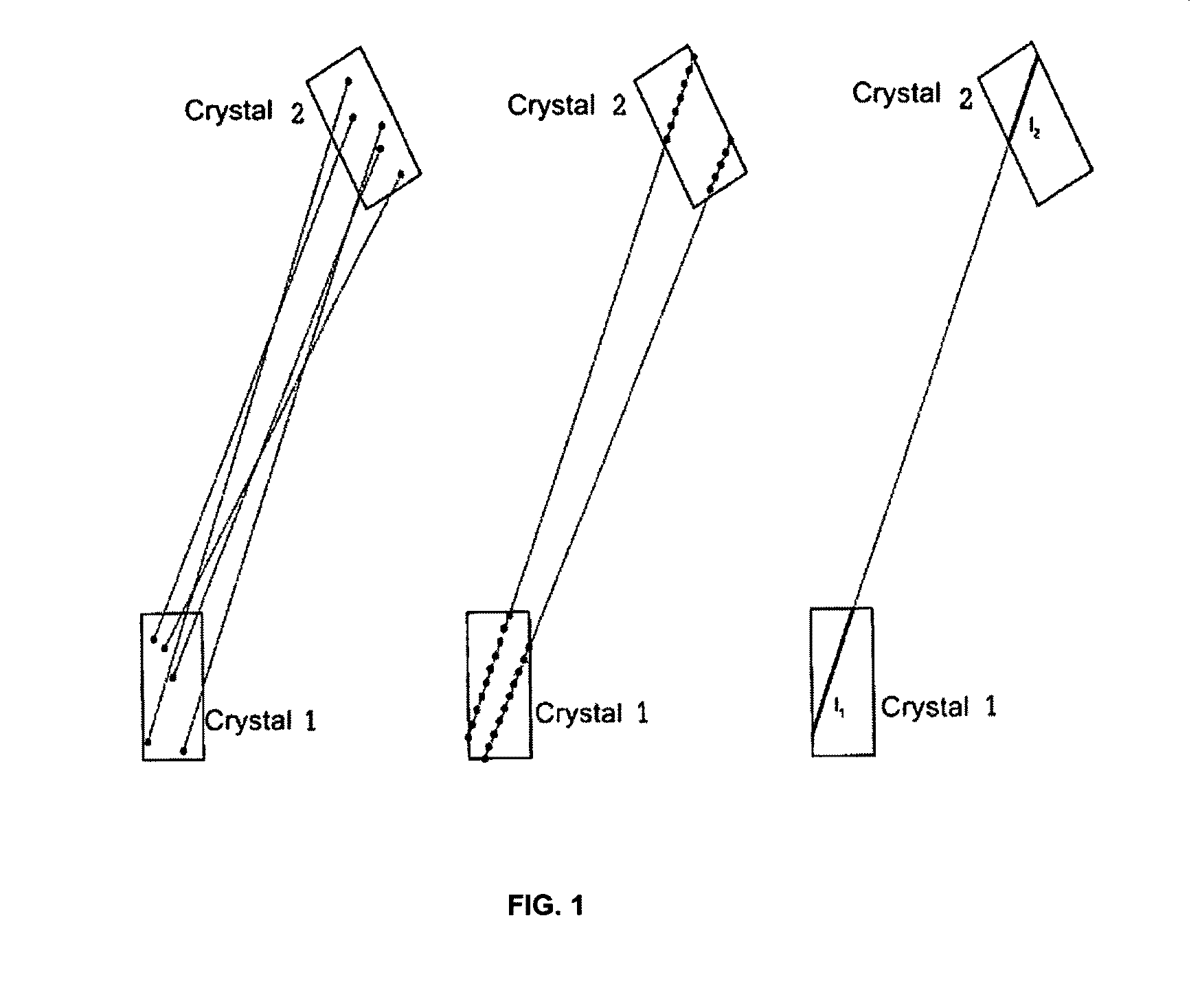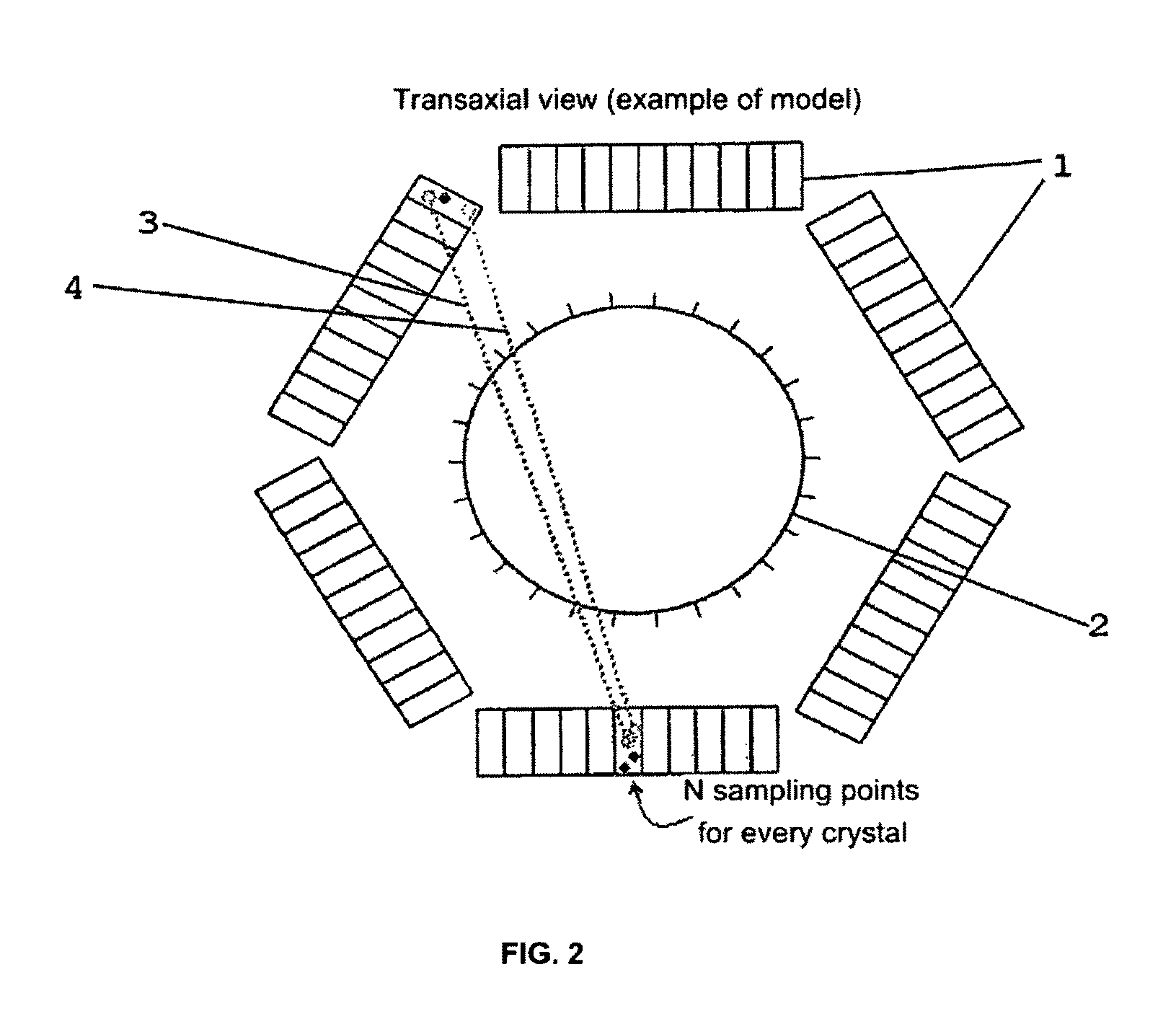Method for positron emission tomography and PET scanner
a tomography and positron emission technology, applied in tomography, instruments, dosimeters, etc., can solve the problem that the detection probability of each signal line in a bundle is not necessarily uniform, and achieve the effect of improving the signal-to-noise ratio and improving image quality
- Summary
- Abstract
- Description
- Claims
- Application Information
AI Technical Summary
Benefits of technology
Problems solved by technology
Method used
Image
Examples
embodiment 1
[0023] (left) individual, randomly determined points in both crystals in each case define an observed signal line, (center) different combinations of certain points form the same signal line.
embodiment 2
[0024] (right) the effective weighting of a signal line (LOR) results from the product of p12=I1*I2 of the intersecting lengths of this LOR with the crystals involved.
[0025]FIG. 2 shows a transaxial view of an irregular detector topology 1 (outer part) and a virtual regular cylinder detector 2 (VRZ, inner part). The VRZ is used in the embodiment of the method according to the invention in which the points of intersection of each signal line to be considered for this reconstruction are determined by way of the VRZ and are treated in the reconstruction as if detectors had been present there. Each physical signal line 3, 4 (LOR) intersects the cylinder in exactly two unequivocal points. For the association of the points of intersection, the cylinder is segmented into a finite number of partial surfaces (virtual detectors) by introducing cylinder rings and regular ring subsets. Each point of intersection of the LOR with the cylinder is located on a unequivocally determined partial surfa...
PUM
 Login to View More
Login to View More Abstract
Description
Claims
Application Information
 Login to View More
Login to View More - R&D
- Intellectual Property
- Life Sciences
- Materials
- Tech Scout
- Unparalleled Data Quality
- Higher Quality Content
- 60% Fewer Hallucinations
Browse by: Latest US Patents, China's latest patents, Technical Efficacy Thesaurus, Application Domain, Technology Topic, Popular Technical Reports.
© 2025 PatSnap. All rights reserved.Legal|Privacy policy|Modern Slavery Act Transparency Statement|Sitemap|About US| Contact US: help@patsnap.com



